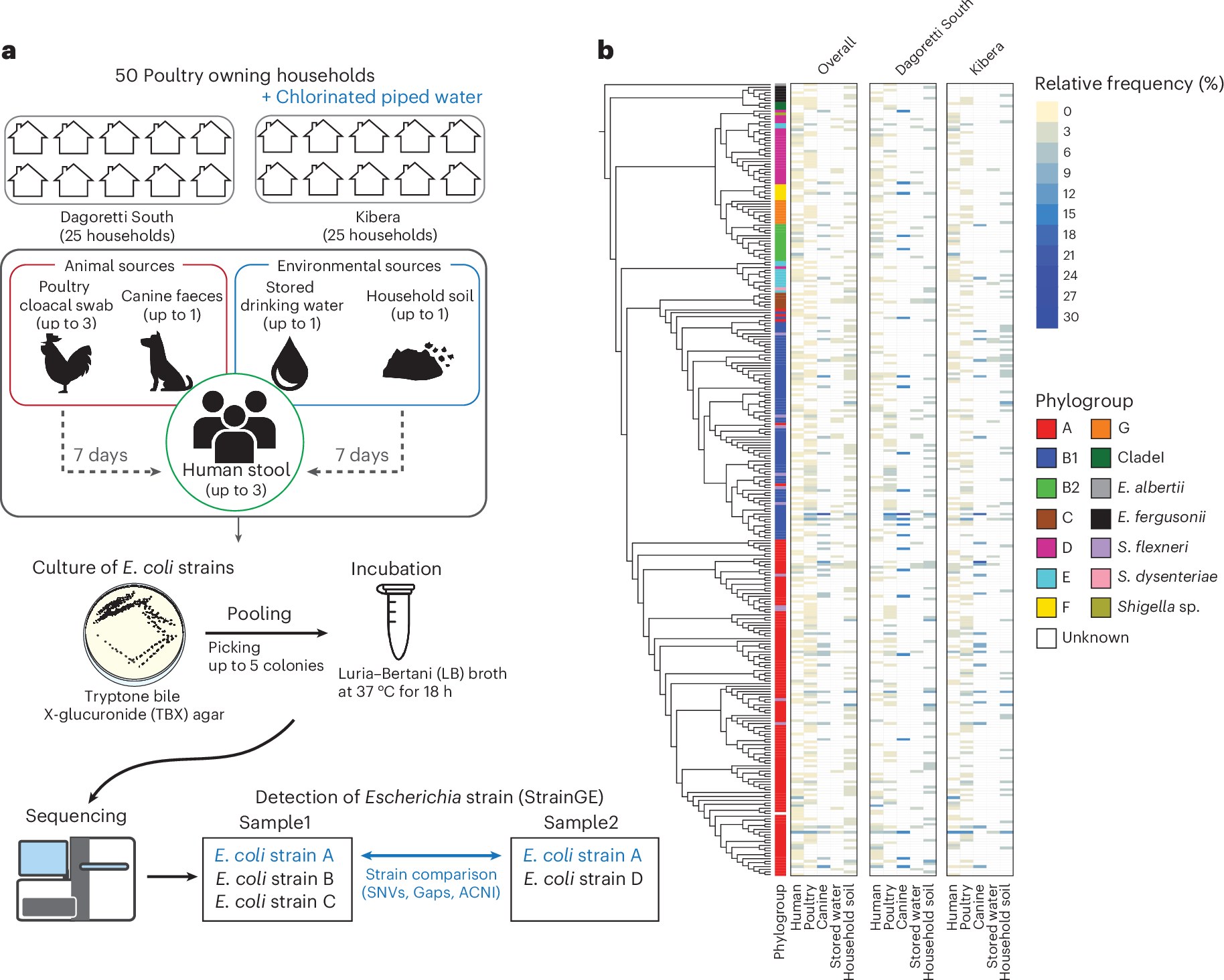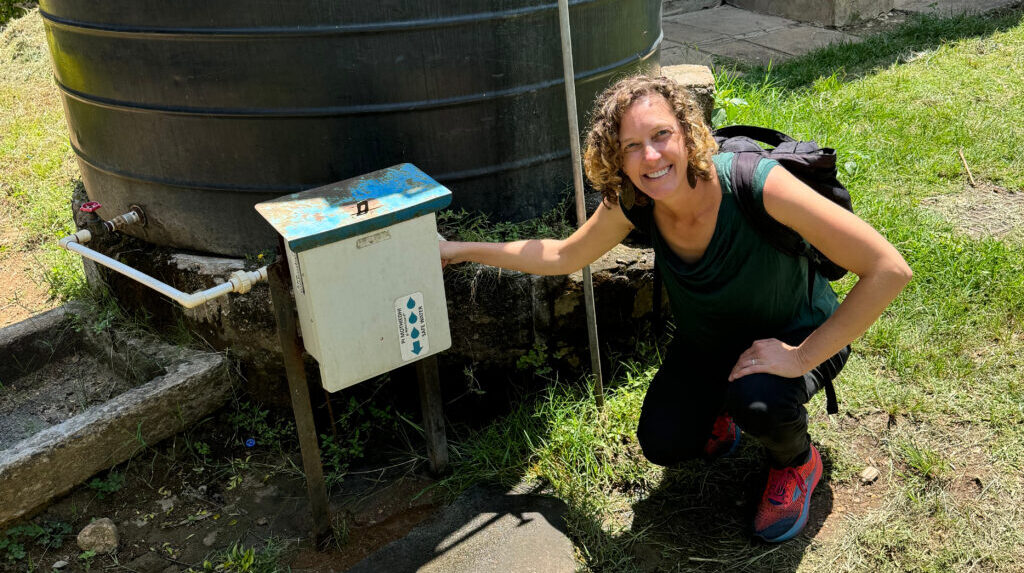
Amy Pickering
@SeqH2O
Assoc. Prof. Environmental Engineering, UC Berkeley. Co-founder, Mangrove Water, also @seqh2o.bsky.social
Excited to piggyback off of this work and see if the TuriTap can be adapted for handpumps givewell.org/research/grant…
We’re proud to have backed Amy Pickering (@SeqH2O) and her team in developing the TuriTap: an inexpensive, low-tech water chlorination device. Read more about Pickering’s work in our latest grantee spotlight: openphilanthropy.org/research/how-a…
We’re proud to have backed Amy Pickering (@SeqH2O) and her team in developing the TuriTap: an inexpensive, low-tech water chlorination device. Read more about Pickering’s work in our latest grantee spotlight: openphilanthropy.org/research/how-a…
The consequences of letting avian influenza run rampant in US poultry | Science—Cliff notes version: don’t let it run rampant, shout out to the whole team @ggronvall @andrewpekosz Erin Sorrell and Michell Kromm science.org/doi/10.1126/sc…
We're hiring for 2 postdocs to work in our lab in London on the newly announced Wellcome Trust SynHG project. If you know people looking to work on big-scale ambitious science like this, please RT and share this with them. Apply by 7/20, interviews in Aug. imperial.ac.uk/jobs/search-jo…
"a Cas9 targeted sequencing assay to selectively enrich and sequence genomic regions of interest" Context-Seq: CRISPR-Cas9 targeted nanopore sequencing for transmission dynamics of antimicrobial resistance nature.com/articles/s4146…
“We were interested in understanding the role of the household environment in bacterial transmission to humans,” said Prof. @SeqH2O. “And our findings showed that water is actually one of the most important transmission pathways for pathogenic and drug-resistant bacteria.”
Berkeley researchers have shown that household environment might play a larger role in the transmission of gastrointestinal bacterial infections via drinking water than previously thought. bit.ly/3GKlm2v
Out Now! Contaminated drinking water facilitates Escherichia coli strain-sharing within households in urban informal settlements bit.ly/44k5nBY #WaterQuality #Ecoli #AntibioticResistance
How are pathogenic and antibiotic resistant bacterial strains shared across humans, animals, and the environment? Using a new approach (PIC-seq), we find drinking water plays an important role in human strain sharing. Just published in @NatureMicrobiol! nature.com/articles/s4156…

Climate change is expected to make sub-Saharan Africa warmer and drier. In @NatureComms, @SeqH2O & co. explore how this affects the burden of collecting water—with impacts for health, hygiene, income, and gender equity: nature.com/articles/s4146…
How a low-cost, no-electricity device is expanding access to clean water | Open Philanthropy openphilanthropy.org/research/how-a…

For communities, most policy standards for "modern energy" are a connection to an electrical grid. But in a new paper in @NatCities, Prof. Dan Kammen and colleagues show a simple connection does not equal affordable, reliable electricity: nature.com/articles/s4428…
Future climate change will increase the water fetching time burden in Sub-Saharan Africa - read more in our @NatureComms paper here: nature.com/articles/s4146…
Nope, won't save $4B given the positive externalities of NIH funding, BUT it will make college inaccessible for young Americans - tuition will increase. Faculty are already extremely efficient at research, teaching, admin/service for universities - there is no room to do more
Last year, $9B of the $35B that the National Institutes of Health (NIH) granted for research was used for administrative overhead, what is known as “indirect costs.” Today, NIH lowered the maximum indirect cost rate research institutions can charge the government to 15%, above…
New pre-print on infant first infections with enteric pathogens! 85% of pathogens detected in infants are also in animals living nearby, using longitudinal sampling we find child hand contact with soil contaminated with animal feces is a primary pathway! medrxiv.org/content/10.110…
Now published in #PLOSWater: Environmental surveillance of soil-transmitted helminths and other enteric pathogens in settings ... @SeqH2O dx.plos.org/10.1371/journa…
📢Next in the EPISOL collaboration! 🇺🇸 🇧🇯and 🇮🇳Environmental surveillance - STH 🪱 & enteric pathogens - in places without networked wastewater - we need methods and strategies to expand surveillance outside of large urban areas @SeqH2O biorxiv.org/content/10.110…
Love how Europeans say they are “on holidays”, like there could never be just one day of holidaying
Join us for the CEE Community Highlights Event on Friday, October 25th, 5-8 pm at West Pauley Ballroom! Register on Eventbrite here: bit.ly/3zKgkQl. We can’t wait to see CEE students, alumni, industry partners, and friends of the department come together! @Cal_Engineer
How can you do wastewater surveillance when there are no sewers? Check out our new preprint on sampling strategies!
📢Next in the EPISOL collaboration! 🇺🇸 🇧🇯and 🇮🇳Environmental surveillance - STH 🪱 & enteric pathogens - in places without networked wastewater - we need methods and strategies to expand surveillance outside of large urban areas @SeqH2O biorxiv.org/content/10.110…